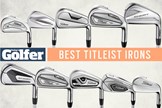Best Titleist irons 2025 – tested on a launch monitor
Last updated:
What are the best Titleist irons for your game?
JUMP TO: Best Titleist Irons | The Data | How We Test | Buying Advice & FAQs
Titleist have been making some of the best golf irons for decades but it hasn’t always been smooth sailing for the iconic golf brand in regards to attracting the more ‘weekend warrior’ level of golfer.
Reputation can be a magnificent way to earn brand recognition, but it can also intimidate areas of your market that want to consider you but don’t feel like they deserve to own your product due to some unwritten rule that follows with said ownership.
So it has been with the Acushnet-owned brand. Always very popular with good golfers, Titleist irons are used by a huge number of tour pros, including Jordan Spieth, Justin Thomas, and Max Homa, as well as many skilled amateurs (Titleist were, in fact, the most commonly used iron manufacturer on the PGA Tour in 2023), the brand has been forever associated with serious golfers looking for serious product.
When you only have the time for a round once per month, this can make Titleist feel like an option that isn’t even in the same room as your game, let alone on your own table.
That’s not to say that the company doesn’t or hasn’t made some stellar equipment for the mid-to-high handicapper. The AP1 irons had been a stalwart offering for golfers less prone to finding the center of the face for the decade of iterations that saw use of that name, showing an alternative to the elite-level models of blades and players irons that Titleist has always had available.
Since the supplanting of the AP-series name with the T-series in the brand’s iron line-ups, Titleist have had something of a renaissance across the board, not only in some of the best irons for mid-handicappers, but also at both the top and bottom end of the spectrum of golfers.
With irons like T400 and T350 ready to elevate the games of even our most inconsistent players (and, in the case of Will Zalatoris, even the absolute best of our players); the classic models with the likes of the 620 MB, 620 CB, and T100; and those clubs that straddle the line between modern and traditional in the T150 and T200 heads; Titleist have created a series of products that should go a long way in proving that Titleist is serious, but serious about including every standard of golfer in the game.
As Will Zalatoris himself has said “I always love telling people ‘yeah, I’m in a game-improvement!'”
We went and tested every model on a launch monitor to help identify which are the best Titleist irons for you.
Best At A Glance
Best for Purists: Titleist 620 MB – View Offer UK
Best Tour Iron: Titleist T100 – View Offer UK
Best Players’ Distance: Titleist T150 – View Offer UK
Best for Forgiveness: Titleist T350 – View Offer UK
Best Titleist Irons
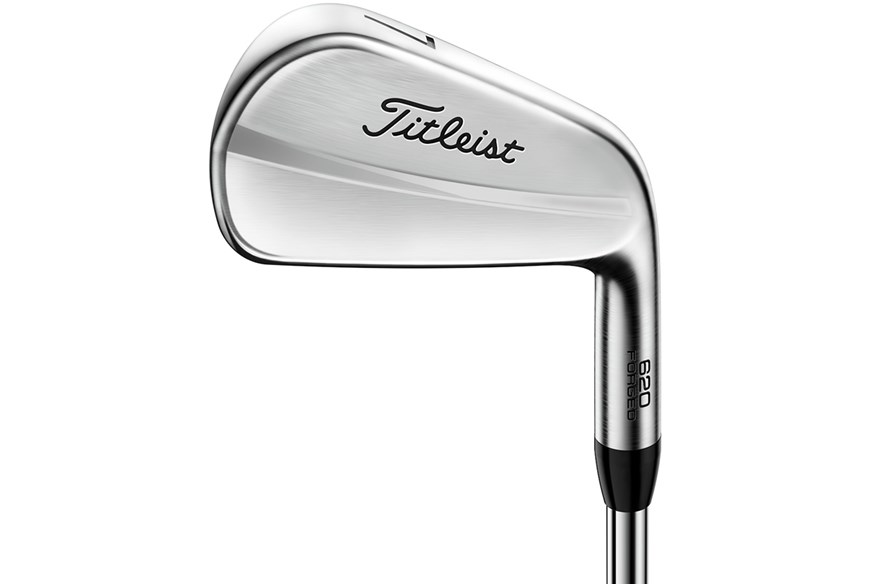

With the likes of Will Zalatoris and former Open Champ Cameron Smith opting for the forged cavity back Titleist T100 over the 620 MB or CB alarm bells should be ringing if you find yourself attracted to this model. Purists will argue Titleist make some of the best-looking and feeling blades around but never lose sight of the fact, players who make a living from the game regularly shun the very unforgiving 620 MB.
It's no reflection on the quality of the iron but our test pro hit shots into an area 66.3% and 83.2% tighter with Titleist’s T100 and T150 irons respectively, so as gorgeous as they are be very careful if you find this model tugging at your heart strings.
TG Test Pro Data:
Ball Speed: 115.6 MPH / Launch Angle: 17.5° / Backspin: 6362 RPM / Peak Height: 29 YDS / Descent Angle: 44.7° / Carry Distance: 165 YDS / Shot Area: 318.5 SQ YDS
Pros
- Super clean and classic looks
- Lovely feel
- Good spin and control
Cons
- Very unforgiving
- Short distances
| Category: | Muscleback Blade |
| Handicap range: | Four and below |
| Construction: | One piece forged |
| 7-Iron loft: | 35° |
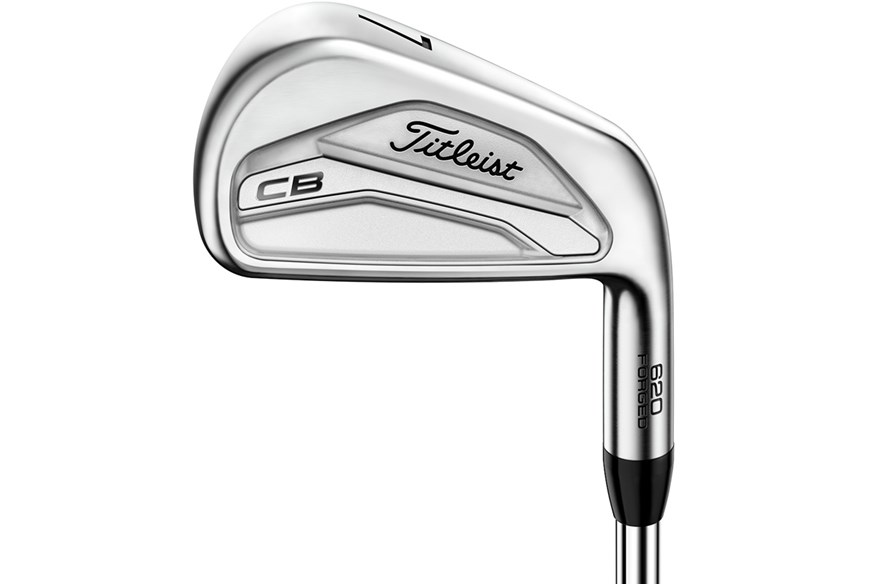

As with the 620 MB the CB is regularly overlooked by some seriously great players for the T100, so you have to see this model very much as a tour-level forging, like the Mizuno JPX923 Tour and TaylorMade P7MC.
Do not be thinking, as lovely and crisp lined as the model is, because it has a shallow cavity back this model is in any way forgiving, it is not. At 13 yards, within the Titleist iron line-up, our test pro saw his joint biggest 7-iron carry distance drop off with this model, which comes down to there being almost zero ball speed protecting tech on offer.
With a 7-iron loft matched to the 620 MB it’s really easy to create a lovely combo set teaming the MB shorter irons with CB mid and longer irons, but only attempt this if you’re a seriously strong and confident ball striker.
Very few players should be looking this far down the Titleist iron family line-up, I’d suggest even the best need look no further than the brilliant and tour player-endorsed T100.
TG Test Pro Data:
Ball Speed: 117.9 MPH / Launch Angle: 17.9° / Backspin: 6127 RPM / Peak Height: 32 YDS / Descent Angle: 46.5° / Carry Distance: 167 YDS / Shot Area: 274.3 SQ YDS
Pros
- Traditionalists will love the weak lofts
- Combo set potential with 620 MB
Cons
- Short distances
- Minimal forgiveness
| Category: | Players’ Iron |
| Handicap range: | Four and below |
| Construction: | One piece forged |
| 7-Iron loft: | 35° |
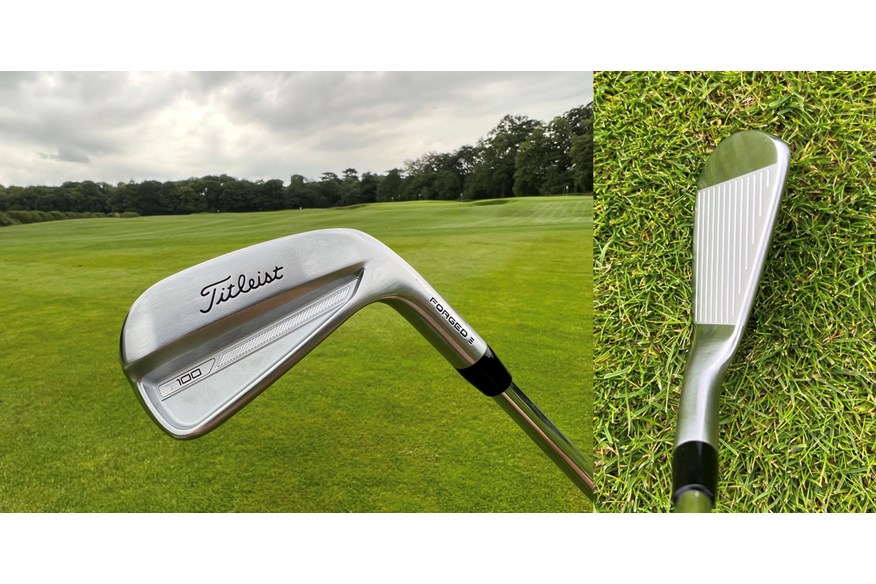

There are lots of really good players’ irons out there at the moment and the T100 is among those bubbling away right at the top of the pile so long as you truly fit within the target audience. The games of Jordan Spieth, Ludvig Aberg, and Cameron Young do but our test pros data highlights how many decent golfers will struggle to favor the T100 over the more powerful T150.
Thanks to a complete overhaul the new T150 is now an iron in its own right. There’s a wider sole and slightly larger profile so no longer is the model (it used to be the T100 S) just a stronger lofted version of the T100.
The changes make it seriously tough in the real world to favor the T100, particularly when you understand for our test pro the T150 with its 2° stronger 7-iron offered 4.5mph more ball speed, more shot height, a steeper descent angle and 8 yards more carry distance. Those numbers also don’t come at the expense of launch or spin, as both models were virtually identical for the two metrics.
Don’t get me wrong if you are a very strong single-figure handicapper with zero concerns about distance the T100 is a beauty, it’s super simple and unfussy and the feel, feedback, and sound are spot on. That said I believe 95% of decent club golfers will struggle to see past the additional performance on offer from the T150.
Read our full Titleist T100 review.
TG Test Pro Data:
Ball Speed: 118.1 MPH / Launch Angle: 17.3° / Backspin: 5677 RPM / Peak Height: 31 YDS / Descent Angle: 45.4° / Carry Distance: 169 YDS / Shot Area: 107.2 SQ YDS
Pros
- Great looks
- A forged feel
- A Tour favorite
Cons
- Not the most forgiving
| Category: | Players' Iron |
| Handicap range: | 6 and below |
| Construction: | Forged cavity with internal tungsten weighting |
| 7-Iron loft: | 34° |
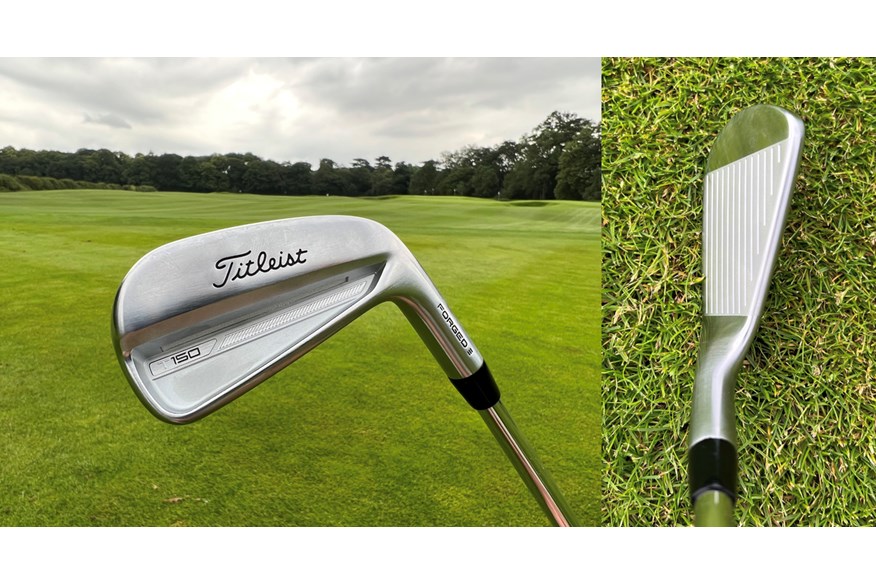

Titleist have been making some cracking irons since introducing the T-Series, the T150 has evolved from players wanting really good-looking forged heads that don’t compromise on speed or distance. Callaway may have invented the players’ distance iron market in 2014 (with their first Apex irons) but it’s models like the T150 and T200 that just weren’t available before then, which highlight why the best players’ distance irons have become so popular.
It’s unthinkable today but before models like the T150 and T200, irons jumped from players’ models like the T100 directly to mid-handicap designs like the Ping G430. Two models that would be considered light years apart within the modern game.
Many club golfers will wonder why Titleist create two players' distance irons, it’s a decision that comes down to the popularity of modern hollow body technology within this category. By offering both a forged cavity back and fast face hollow body construction the company ensures no matter what your preference Titleist has a solution.
Will Zalatoris plays this model so do not be thinking it’s a forgiving club golfer cavity back, particularly as Titleist refer to it as their ‘faster tour iron’.
If you’re drawn to this model you must hit the T200 as well, only then can you gauge the differences forged cavity backs or hollow body designs make to sound, feel, and ball flight. General consensus is modern hollow body fast face irons launch shots higher with a little less spin, whereas full-on forged models like the T150 launch, lower with a little more spin, even though our test data didn’t entirely support the thinking on this occasion.
For lots of golfers, the T200 will be a fraction longer too.
TG Test Pro Data:
Ball Speed: 122.6 MPH / Launch Angle: 17.5° / Backspin: 5686 RPM / Peak Height: 34 YDS / Descent Angle: 46.8° / Carry Distance: 177 YDS / Shot Area: 53.6 SQ YDS
Pros
- Power in a players' iron chassis
- A cracking shape and profile
- Forged feel in a distance iron
Cons
- Not quite as strong as the very best players' distance irons
| Category: | Players' Distance Iron |
| Handicap range: | 12 and below |
| Construction: | Forged cavity back with internal tungsten |
| 7-Iron Loft: | 32° |
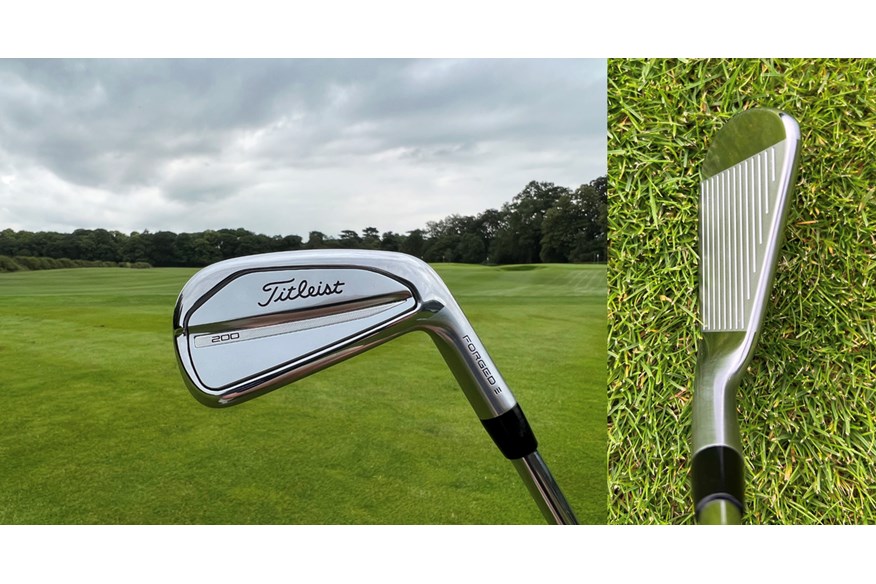

Titleist were fast out of the players’ distance hollow body iron traps when PXG and TaylorMade first appeared on the scene. But while the T200 is seen by some as one of the best players' distance irons around it’s never quite been held in the same regard as the TaylorMade P790.
A significant portion of what’s held the model back is the sound and feel of the unfilled head, which in part at least comes down to only the face being forged. Just by hitting this model alongside the T150 you will immediately know whether the sound and feel are acceptable to you, and there lies the determining factor between choosing between this model and the full-on forged cavity back T150.
The hollow body construction is very typical for the speed and distance-focused modern-day players' distance iron market. The T200 is beautifully styled and shaped and thanks to the reasonable loft so long as your iron game boasts a degree of consistency you may well find this model flights shots better at more average speeds than the T350.
In anyone’s eyes the model has to a very credible alternative to the TaylorMade P790, Mizuno Pro 245, and new Ping i530.
Read our full Titleist T200 review.
TG Test Pro Data:
Ball Speed: 119.7 MPH / Launch Angle: 15.4° / Backspin: 5760 RPM / Peak Height: 28 YDS / Descent Angle: 43.3° / Carry Distance: 173 YDS / Shot Area: 331.5 SQ YDS
Pros
- Good distance
- Good height and stopping power
- Attractive looks
Cons
- The sound doesn't compare with a TaylorMade P790 or PXG 0311 P
| Category: | Players’ Distance Iron |
| Handicap range: | 12 and below |
| Construction: | Hollow body with tungsten weighting |
| 7-Iron loft: | 31° |
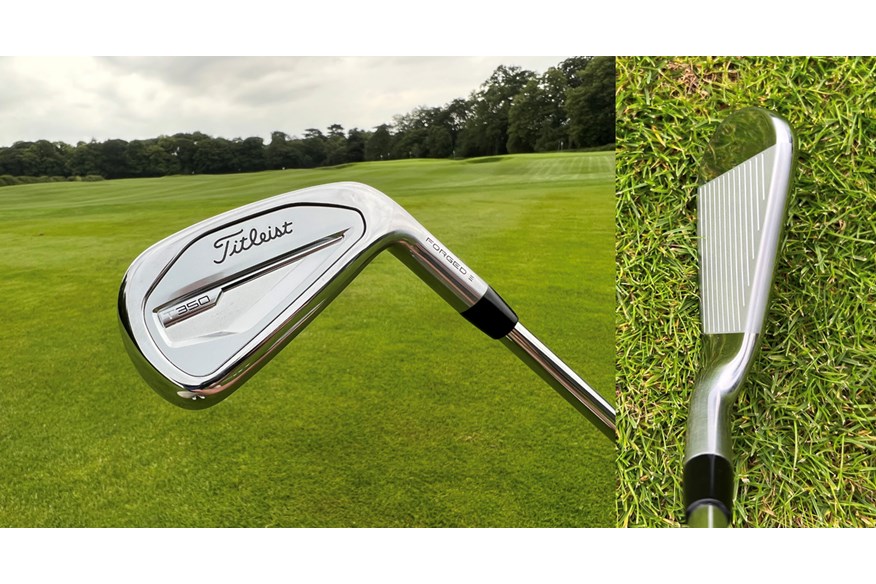

Titleist’s reputation doesn’t lie in making brilliant mid-handicap and game improver irons, but from what I’ve seen I don’t think the hollow body T350 get quite the credit they deserve within the best mid-handicap iron arena.
The T350 is an award winner within the Mid-Handicap iron category here at TG this year, and my thinking comes down to this model not only being one of the most attractive models within the category, but it’s also a top performer.
To a tee for ball speed, launch, spin, descent angle, and carry distance the T350 followed our test averages in the Mid-Handicap iron category, which to many might not scream top performer.
But, throw in a lower-than-average carry distance drop off and smaller shot area than the masses along with a forged face, a ton of tungsten toe weighting to up MOI, and an array of top fitting options (which many in the category can’t compete with) and this model deserves a position on any mid-handicappers shortlist in 2024.
As you’d expect with the strongest loft in the Titleist family the T350 is also the brand's longest and most forgiving iron. Interestingly Will Zalatoris uses the forgiving 3-iron which has to say this isn’t a half-bad-looking head.
If your swing speed is anywhere close to average make sure you explore Titleist’s higher launch shaft options.
Read our full Titleist T350 review.
TG Test Pro Data:
Ball Speed: 125.5 MPH / Launch Angle: 14.3° / Backspin: 5159 RPM / Peak Height: 29 YDS / Descent Angle: 42.6° / Carry Distance: 186 YDS / Shot Area: 167.2 SQ YDS
Pros
- Good levels of forgiveness
- Smart looks
- Forged face
Cons
- Strong lofts may not suit average speed players
| Category: | Mid-Handicap Iron |
| Handicap range: | 12 and above |
| Construction: | Cast hollow body with forged face |
| 7-Iron loft: | 29° |
Data comparison: How the best Titleist irons perform in numbers
| 7-Iron Loft | Ball Speed | Launch Angle | Backspin | Peak Height | Descent Angle | Carry Distance | Shot Area | |
| Titleist 620 MB | 35° | 115.6 MPH | 17.5° | 6362 RPM | 29 YDS | 44.7° | 165 YDS | 318.5 SQ YDS |
| Titleist 620 CB | 34° | 117.9 MPH | 17.9° | 6127 RPM | 32 YDS | 46.5° | 167 YDS | 274.3 SQ YDS |
| Titleist T100 | 34° | 118.1 MPH | 17.3° | 5677 RPM | 31 YDS | 45.4° | 169 YDS | 107.2 SQ YDS |
| Titleist T150 | 32° | 122.6 MPH | 17.5° | 5686 RPM | 34 YDS | 46.8° | 177 YDS | 53.6 SQ YDS |
| Titleist T200 | 30.5° | 119.7 MPH | 15.4° | 5760 RPM | 28 YDS | 43.3° | 173 YDS | 331.5 SQ YDS |
| Titleist T350 | 29° | 125.5 MPH | 14.3° | 5159 RPM | 29 YDS | 42.6° | 186 YDS | 167.2 SQ YDS |
How we tested the best Titleist irons
To test golf equipment, we create a controlled indoor environment at Keele Golf Centre and use a premium tour-level golf ball (the Titleist Pro V1x). We collect all the data from every shot hit, using a Foresight GC Quad launch monitor.
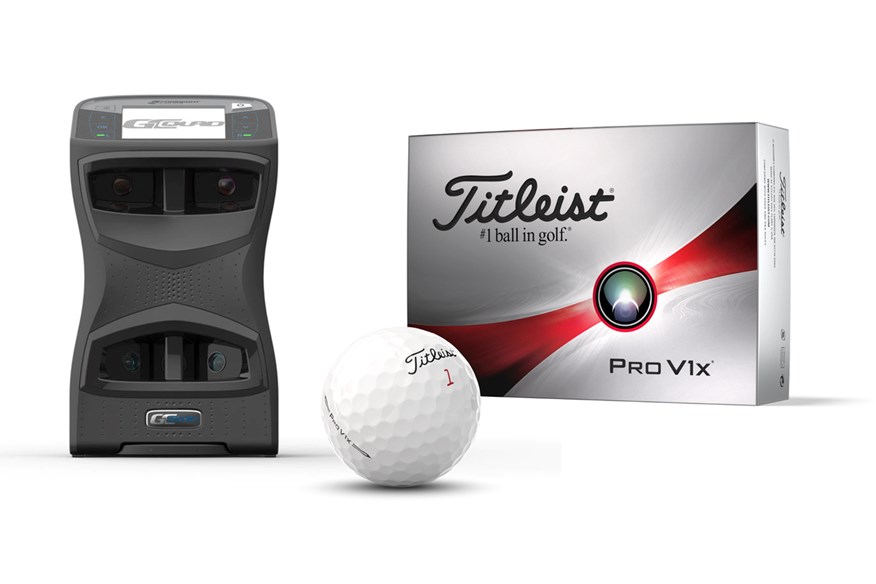
Why do we use a Titleist Pro V1 golf ball?
It would be easy to use just one test golf ball brand every year, but that inevitably leads to criticism for being too closely aligned to one manufacturer, especially if that brand’s equipment performs particularly well. To ensure fairness we like to switch manufacturers for the Top Gear test ball each year. For 2025 we’ve used the Titleist Pro V1x.
The brand revealed the latest Pro V1x model in 2023, and Titleist’s Senior Director of Golf Ball Research and Engineering, Mike Madson says “Consistency means when a golfer tees up a Pro V1 or Pro V1x, every properly executed shot they make is going to deliver the performance they expect and the performance they trust.”
Thanks to the Titleist Pro V1 and Pro V1x mopping up mountains of tour wins across all global tours we know the model is trusted by the world’s very best.
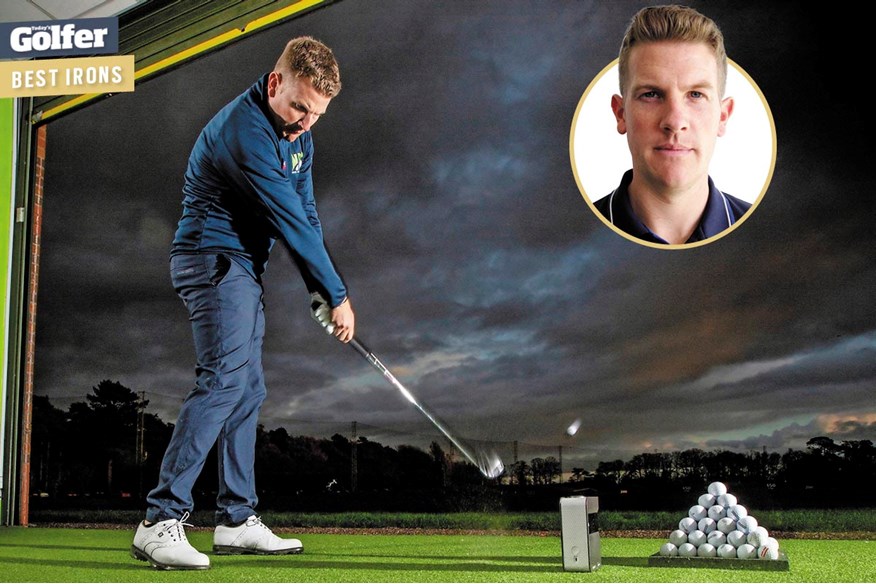
Why do we use a pro tester?
Speak to any golf club engineer about product testing and they all talk about needing a repeatable, reliable strike to offer any sort of valuable comparison. So, whilst we accept not all of the equipment included within our tests was designed for our test pro, what our data shows is a great comparison of how clubs in each particular category differ, which is hugely valuable in helping you narrow your choice as a consumer.
In 2024 we tested 83 different 7-irons, during which our test pro missed a target green at 170 to 200 yards no more than a dozen times. He got a hole-in-one, lipped out, and hit the flag several times, he also loves hitting golf balls all day long. In short, Neil Wain is the perfect club tester due to his consistency in delivering accurate and reliable comparative data.
We would of course always recommend attending a proper fitting session, to ensure any purchase is tailored to your game.
Buying advice & FAQs
Which Titleist iron is most forgiving?
In 2025 the T300 are Titleist’s most forgiving Titleist irons. Just be aware if your swing speed is close to average the slightly more lofted T200 might flight shots higher and with more stopping power which will up playability.
Are the T200 or T300 more forgiving?
Both the Titleist T300 and T200 have a ton of tungsten weighting inside, however, thanks to the bigger head, additional sole width, and longer blade length the T300 boasts a higher MOI so it will be more forgiving.
The forgiveness level increases with the model number in the Titleist T-Series iron range, so T200 is more forgiving than T100, T350 more forgiving than T200, and the almost now retired T400 is more forgiving than T350.
Who are the Titleist T350 irons aimed at? What handicap should play T350?
The Titleist T350 irons are aimed at the game improver and Mid-Handicap iron market. Typically they will suit 12 handicappers and above. Expect plenty of forgiveness and distance-boosting potential from the strong lofts, things many mid to high handicappers desire.
What are the best Titleist irons for a mid-handicapper?
The Titleist T350 is the best Titleist iron for a mid-handicapper who is hoping to improve. They offer lots of distance and forgiveness alongside good height, spin, and stopping power.
What handicap are the T200 irons for? Are Titleist T200 irons good for high handicappers?
As a players’ distance iron the Titleist T200 irons are best for handicaps of 12 and below. High handicappers will generally benefit from the greater forgiveness on offer with the Titleist T350. That said, handicap ranges are never set in stone; you could be a decent iron player but have a high handicap due to other parts of your game, in which case the T200 might be a good option for you.
Is the Titleist T150 or T200 better?
Whilst it’s impossible to say one is categorically “better” than the other, the Titleist T200 will be a better option for golfers who like the idea of playing a fast-face modern hollow body players’ distance iron. For many this style of iron will launch higher and spin less. Whereas the T150 is a traditional full-on forged players’ distance iron with strong lofts, which for many will launch lower and spin more.
Any choice between the pair is likely to come down to whether you want to accept modern fast face and hollow body tech or not.
Subscribe to Today’s Golfer Magazine! In every issue there are exclusive interviews with star players, equipment tests and buying advice, PGA pro tips to you help you shoot lower scores and our highly regarded Top 100 course rankings from around the world.
